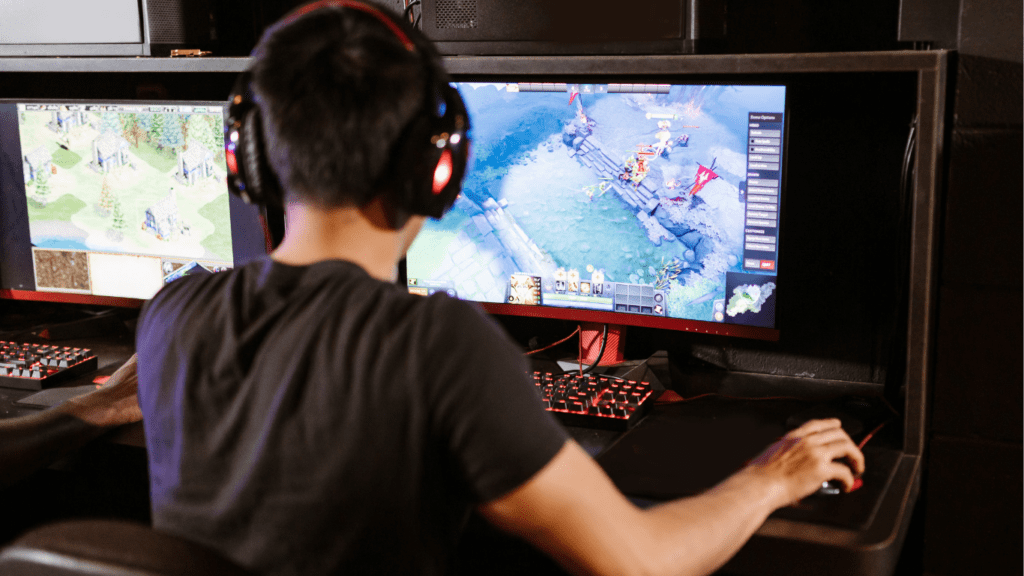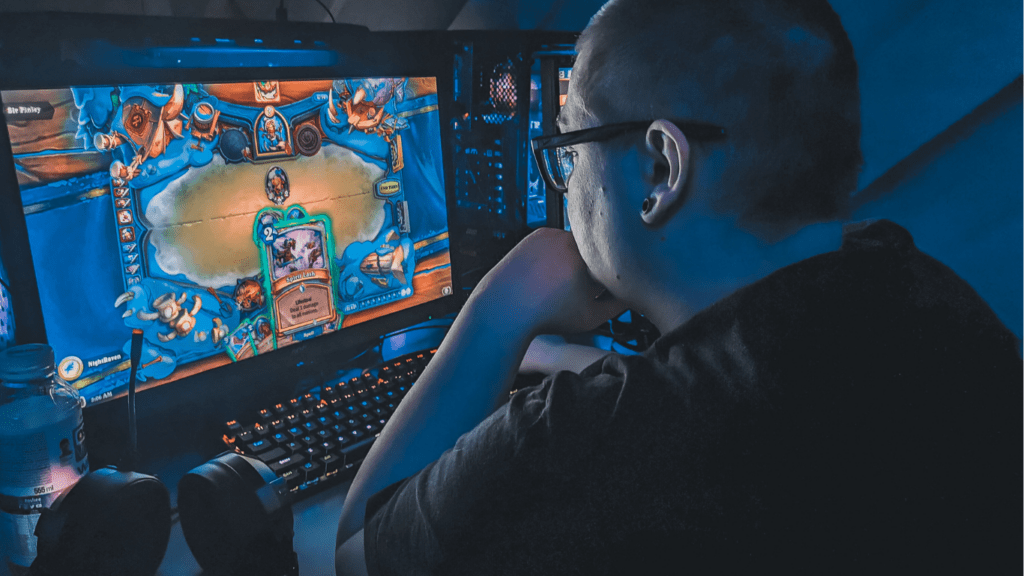Exploring The Intersection of Gaming and Digital Art
- Digital Art’s Role in Gaming
Digital art plays a crucial part in gaming by shaping the visual elements that define the player’s experience. Artists create assets like character designs, landscapes, and textures which developers then integrate into the game engine. This collaboration results in visually striking games that pull players into their worlds.
- Innovative Collaborations
Artists and developers now collaborate more closely than ever before. One example includes concept artists working with game designers to create cohesive visual themes. These partnerships not only produce better graphics but also ensure that the artistic vision aligns with gameplay mechanics.
- Technological Advancements
The intersection of gaming and digital art has driven technological advancements. Tools like Unreal Engine and Unity offer robust art creation features that streamline the development process. This technology allows artists to render high-quality visuals in real-time, enhancing the gaming experience.
- Impact on Player Engagement
The visual elements crafted by digital artists significantly impact player engagement. Games with detailed graphics and artistic flair draw in players and keep them invested in the storyline. For instance, games like “The Witcher 3” and “Horizon Zero Dawn” are known for their beautiful art, which helps create a memorable gaming experience.
- Opportunities for Artists
The gaming industry offers vast opportunities for digital artists. Artists can specialize in areas like 3D modeling, animation, and environmental design. This diversity allows artists to find niches that match their skills and interests, thereby contributing uniquely to the gaming landscape.
- Future Prospects
Looking ahead, the fusion of gaming and digital art promises exciting prospects. With advancements in VR and AR, digital artists will have even more tools to create immersive experiences. The continuous evolution in both fields ensures that the boundary will only expand, offering endless creative possibilities.
By focusing on digital art’s integration in gaming, this section underscores the synergy between artists and developers. Technological advancements and collaborative efforts set the stage for continued innovation, impacting player engagement and opening up new opportunities for artists.
Historical Context
The origins of digital art in gaming trace back decades. Exploring these roots reveals how artistry and technology have intertwined to shape modern gaming experiences.
Early Digital Art
Early digital art emerged in the 1960s. Computers like IBM’s 704 introduced the first examples of digital graphics. Artists used plotters to create intricate designs. In the 1970s, pixel art became prominent with titles such as “Space Invaders” using simple graphics due to hardware limitations. These visuals set the foundation for evolving digital aesthetics in gaming.
Evolution of Video Games
Video games began evolving rapidly in the 1980s. Consoles like the Atari 2600 showcased improved graphics and gameplay. The 16-bit era saw systems like the Sega Genesis enabling more detailed art and complex animations. By the mid-1990s, Sony’s PlayStation introduced 3D graphics, revolutionizing game visuals. Each technological leap allowed digital artists to push the boundaries of creativity further, leading to today’s highly sophisticated game environments.
Collaboration Between Artists and Game Developers
In modern gaming, the synergy between artists and developers is essential for creating immersive experiences. Their collaboration ensures that artistic vision and technical execution align seamlessly.
Case Studies
Studios like Blizzard and Naughty Dog exemplify successful collaborations. Blizzard’s “Overwatch” showcases vibrant character designs blending with dynamic environments, captivating players worldwide. Similarly, Naughty Dog’s “The Last of Us Part II” integrates photorealistic art with intricate gameplay mechanics, creating an emotionally charged experience.
“Journey” by thatgamecompany stands out as another prime example. Artists and developers worked closely to produce a visual and auditory masterpiece that won multiple awards for its innovative design. The game employs minimalistic visuals with sweeping landscapes, showcasing the power of cohesive artistic direction and technical prowess.
Impact on Game Design
Collaborative efforts between artists and developers significantly influence game design. Artistic inputs shape visual aesthetics, guiding level design, character development, and environmental storytelling. For instance, in “Horizon Zero Dawn,” Guerrilla Games’ artists and developers crafted a beautiful post-apocalyptic world with rich lore and detailed environments, enhancing player immersion.
The collaboration also extends to gameplay mechanics. In “Cuphead,” the developers and artists synchronized 1930s cartoon-inspired art with challenging run-and-gun gameplay, creating a unique, cohesive experience. This blend of artistic style and gameplay mechanics directly impacts how players interact with and perceive the game world.
Technological advancements in game engines like:
- Unreal Engine
- Unity
facilitate these collaborations. These tools provide a robust framework for artists and developers to integrate art assets seamlessly, ensuring that every visual element supports the overall game design.
Artistic Techniques in Modern Video Games

Modern video games integrate various artistic techniques to create immersive and engaging experiences. Leveraging advancements in technology, game developers weave visual aesthetics, sound design, and music seamlessly into their creations.
Visual Aesthetics
Developers use visual aesthetics to craft the look and feel of a game. High-resolution textures enhance the realism of environments, as seen in “Red Dead Redemption 2” with its lifelike landscapes and detailed character models. Cell shading provides a stylized, comic-book-like appearance, exemplified by “Borderlands.” Photorealistic rendering achieves ultra-realistic visuals using techniques like ray tracing for lifelike lighting in games such as “Cyberpunk 2077.” Each visual style contributes uniquely to the player’s experience, impacting immersion and emotional connection.
Sound Design and Music
Sound design and music shape the atmosphere and emotional tone of video games. Sound engineers use spatial audio to create realistic soundscapes, making gamers feel they are part of the game world. For instance, in “The Last of Us Part II,” footsteps, environmental noises, and other sounds provide depth and realism. Music composers tailor scores to enhance narrative and emotional impact, such as in “The Witcher 3: Wild Hunt,” where the soundtrack elevates epic moments and quiet interludes. Effective sound design and music work together to heighten immersion and enrich the overall gaming experience.
Cultural Impact
Gaming and digital art aren’t just confined to screens; they have significantly shaped modern culture.
Art Exhibits and Museums
Modern gaming art has found a place in prestigious museums. The Smithsonian American Art Museum hosted “The Art of Video Games” in 2012, showcasing over 80 games. This exhibition highlighted the artistic value of game design, focusing on both visual aesthetics and storytelling. Other notable institutions, like the Museum of Modern Art (MoMA), have included games like “Pac-Man” and “The Sims” in their collections. These cultural nods validate the artistic merits of digital gaming art.
Influence on Popular Culture
Gaming’s impact extends beyond art into broader popular culture. Iconic characters like Mario and Lara Croft have become cultural symbols, recognized globally. Movies, TV shows, and music videos increasingly draw inspiration from gaming visuals and narratives. Streetwear brands often collaborate with game franchises, incorporating game-inspired designs into their collections. These cross-industry influences highlight gaming’s pervasive role in shaping contemporary culture.
Future Trends
The intersection of gaming and digital art shows no sign of slowing down. With rapid advancements, several exciting trends are emerging.
Technological Advancements
The rise of real-time ray tracing revolutionizes visual fidelity. Ray tracing, supported by GPUs like NVIDIA’s RTX series, provides realistic lighting, shadows, and reflections. Another breakthrough is artificial intelligence (AI), which enhances asset creation and procedural generation. For instance, AI tools in game engines streamline animation processes, making characters more lifelike.
Virtual reality (VR) and augmented reality (AR) also push boundaries. VR headsets, such as the Oculus Rift and HTC Vive, offer immersive experiences, while AR devices, including Microsoft HoloLens, blend digital art with the real world. Haptic feedback technology further amplifies player immersion by simulating physical sensations.
Emerging Platforms
Blockchain technology introduces decentralized platforms for game assets. Non-fungible tokens (NFTs) permit true ownership of digital art and in-game items. Platforms like Ethereum enable players to trade, sell, or display their virtual assets securely.
Cloud gaming services, like Google Stadia and NVIDIA GeForce Now, democratize access to high-end gaming. These platforms eliminate hardware constraints, allowing players to experience cutting-edge digital art on any device with internet access. Subscription models offer vast libraries of games, fostering greater creativity among developers.
These trends indicate a bright future for gaming and digital art, driven by technological advancements and evolving platforms.





